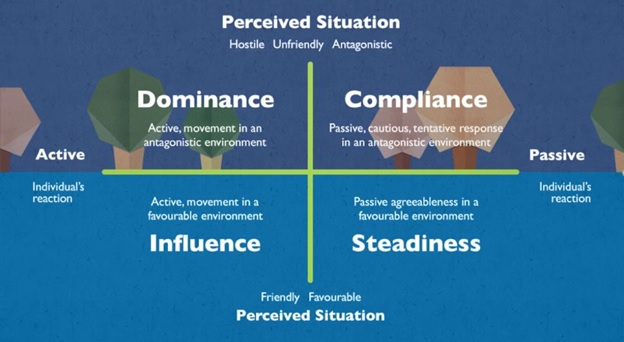By Bruce Sperry Principal Process Improvement Engineer, (MBB) Master Black Belt and Stephen Taylor Lean Six Sigma (LSS) Black Belt (General Dynamics Electric Boat Division)
An engineering group in our company was experiencing communication difficulties within and external to their group. The supervisor was unable to determine the cause for these issues so he reached out to the local process improvement engineer, an LSS Black Belt, for assistance.
It quickly became apparent that internal communication, which was the larger of the two problems, was caused by people telling other people what to do instead of taking the time to explain the reasoning behind the need for change. This manner of communication created adversarial relationships within the group causing some people to dig in their heels against change. Because they did not understand why changes were needed, they wanted to continue to do things in the same manner that they had always done them.
When the members of the group were communicating to people outside of their group, they failed to communicate in a language that was comprehended by the recipients of the information. Sometimes the communication was too technical and included details that were not necessary for the purpose of the communication; and other times the information was vague and did not clearly specify the desired outcome. Heavy usage of acronyms within our company can exasperate communication problems as some have multiple meanings depending on the originating department and when utilized they can confuse the message recipient. Clear communication between departments is essential and was not happening here.
In both internal and external communications, the communicators did not understand why their directions and recommendations were not being accepted and implemented. After observing the communication challenges, the Black Belt realized that the group did not understand that their manner and methods of presenting the material was impeding the desired process. He came to believe that the root cause of the problems might be the communication methods utilized by individuals based on their own personality. To confirm the Black Belt’s theory and obtain some technical expertise, the Black Belt reached out to the company’s DISC (Dominance, Influence, Steadiness and Compliance) subject matter experts (SMEs), who had been trained by Thomas International to be Personal Profile Analysts (PPAs.)
After scoping the project, the SMEs determined that the communication issues could be improved with the utilization of the DISC behavioral method and proceeded to identify the target audience. While the training program was being developed, the group participants independently completed a DISC assessment that was then analyzed by Thomas International.
The SMEs designed training to meet the group’s specific needs. Because people can be sensitive when their personal style is being critiqued or they are being asked to make behavioral changes, the SMEs intentionally built the training program to be entertaining, fun for the participants and conducted in a safe environment.
The training program was based on a similar one utilized at our company to train Black Belts how to identify and then communicate with people based on their behavioral styles. This approach provided the trainers with extensive material that had already been prepared. For this event, with minimal work, the training was simplified, and focused on exercises and practiced in a safe and fun environment.
When the DISC assessment results were shared and explained to the group, the typical reactions occurred with most people agreeing that that results were accurate and reflected their self-assessment. Comments such as “I know that about myself” or “that is exactly me.” Thus, the participants believed in the assessment results and the instructors could begin to show them how their behavior was perceived by others with different personality profiles and how this could negatively impact the results of their communication efforts. They then embarked on learning how to identify other people’s communication style and how effective communication could happen between people with different personalities. The graphic shown below was utilized repetitively throughout the training as a reference for the DISC types.

The multi-facetted training program consisted of entertaining videos, “Fun Fact Stories,” a game and many practice sessions. The students felt comfortable exploring and trying new behaviors because it was a relaxed training environment and everyone was working to achieve the same objective of improved communication.
Several entertaining videos, created by Robert Rhom, were incorporated into the training to reinforce the concepts of the behavioral methods and tendencies. Rhom created his videos, which are available to the public on You Tube, based on the Thomas DISC principals and concepts. The first video discussed how he used the DISC behavioral method to develop the Arizona Diamondback baseball team into World Series Champions in five years. This was the fastest time for a rookie team to become world champions and he was awarded a World Series ring in recognition of his contribution to the team’s success. A second video focused on the High-C personality type that requires all of the facts before making a decision. In the third video, Rhom recalled how during one of his presentations he was referencing Tom Hank’s character in “Castaway” who was talking to a soccer ball. A conference attendee corrected Rhom and said that the character was talking to a volleyball. Rhom accepted this correction; however, that evening he went back to his hotel to re-watch “Castaway” to verify that it was a volleyball. He used this example to demonstrate his High D (for dominance) tendency. Collectively, the videos showed the differences in the various behavior types in a humorous manner that the students would remember.
To further facilitate the students’ ability to identify and remember the DISC profiles, the SME’s included “Fun Facts” in the form of stories. The first story was about four different people who were walking in a public place, slipped on a banana peel, were not injured, and got up and looked around to see if anyone had witnessed the fall. The four people’s reactions to the fall, were described and the group had to guess their personality. The first person, a Type S, merely picked up the banana peel and threw it away. The second person, a Type D, walked away without picking up the peel and maybe saving someone else from falling. The third person, a Type I, became very upset, embarrassed and vocal. The last person, a Type C, put up barriers to prevent anyone else from falling and contacted the EPA to properly remove and dispose of the banana peel. This exercise was fun and helped the students identify and remember the DISC profile characteristics.
The second story described four different people’s actions when they entered an elevator. The first person who entered hit the UP button, and then hit it again and again, anxious to get to the 10th floor with no regard for anyone else’s needs. The second person jumped into the elevator and began chatting away about sports and current events. The third person, quietly stood in the elevator and when she noticed someone hurriedly approaching the elevator, she stuck out her arm to stop the door from closing. The fourth person entered the elevator and he began to read the warning plaques that stated the number of people and weight safely allowed on the elevator. He did some simple math and concluded that he would have to get off the elevator if another person entered. Can you identify each elevator riders’ DISC profile?
Another method utilized to have the participants practice their communication and negotiation skills based on their own and their counterparts’ personality profiles was to play a game called Ace of Trades. This game was created by one of the SME’s and has been used in numerous different types of training programs, including one on the topic of planning. In this game, the participants divided themselves into teams and played two rounds. In the first round, the players were given a strict process, little direction and no real objective. The teams were cautious when the activity started and only a few thrived. Similar personality types sat together and the teams with more outgoing members performed better. How people handled stress differently was notable. The combination of uncomfortable social interactions for some and the opinion of many others that this was a pointless activity, led to few teams being successful. The second round, was deliberately designed to be easier for the players since they could plan ahead and put themselves in roles that were comfortable for them. They had clearly defined objectives. These changes allowed the people to cooperate and achieve far greater success in the second round. This game clearly showed the participants that by understanding the objectives and working together as a team, they would achieve greater success.
In summary, after the problems were presented and analyzed, it became apparent that the communication styles were the root cause. By teaching and practicing the DISC Method in a fun and non-threatening environment, the group understood the causes of their frustration and had new tools to use on a daily basis in their work environment. The immediate feedback on the learning event was that they had enjoyed the training and it had opened their eyes to new methods for communication. The group left feeling empowered. Weeks after the training, the group supervisor reported that the training had been successful and the results were improved communication that increased productivity and happier employees.



